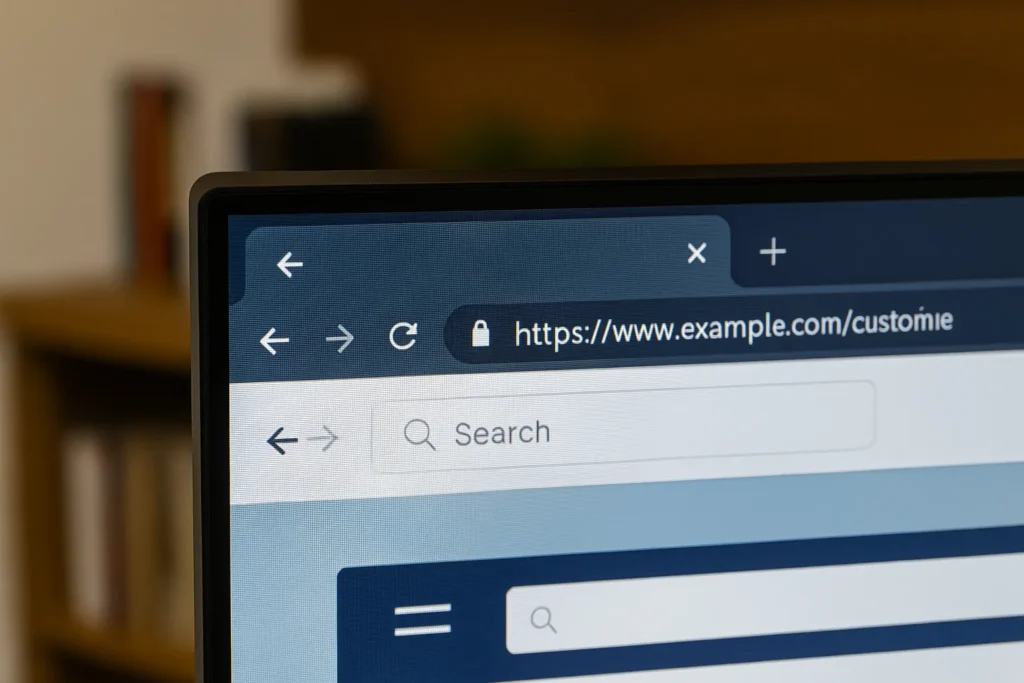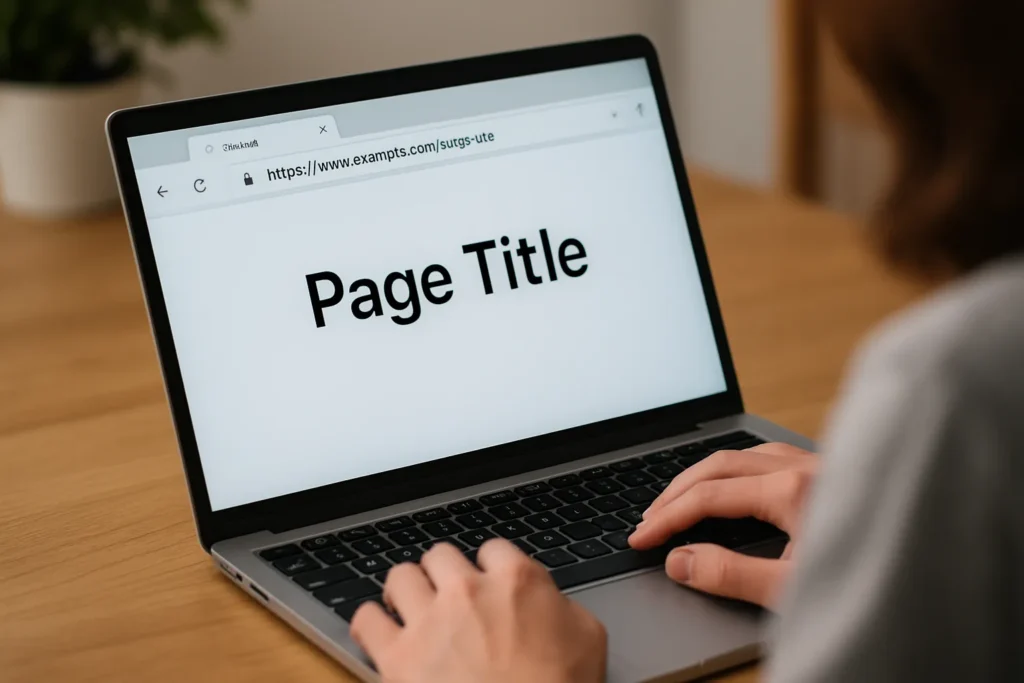An SEO URL structure is the way your links are written so search engines can understand what your content is about. A clear URL helps your page get indexed properly and appear in the right search results. That means more traffic for your website, with less guesswork.
URL structure matters because it impacts two things: how well your content ranks and how much people trust the link before they click. If your URLs are long, cluttered, or filled with symbols, Google may struggle to make sense of them, and users might skip them entirely.
On the flip side, a clean and seo friendly URL like yourwebsite.com/seo-url-structure-guide gives clarity to both search bots and people. It’s a small but effective strategy.
If your website has never had a proper look at its URLs, this is one of the easiest ways to boost your visibility without rebuilding everything. Let’s know how with Plugins Electronix.
What Makes a URL SEO-Friendly
Not all URLs are created equal. Some work well for users and search engines. Others confuse both. Here’s a quick example of the difference.
Take this URL, for example:
www.site.com/index.php?id=839
Now look at this version:
www.site.com/blog/seo-friendly-url

The second one uses descriptive words, relevant keywords, and a readable format. It’s easy for both users and search engines to understand what the page is about. That’s what makes a URL effective.
A seo friendly URL should be short, simple, and match the intent of the content. So, we recommend avoiding symbols, capital letters, and random strings of characters. Instead, use hyphens to separate words and choose terms that clearly describe the page topic.
The ideal URL structure should:
- Reflect the topic of the page
- Be easy to read and remember
- Use one or two relevant keywords
If your page URL includes confusing strings or duplicates, it’s worth updating. For example, changing /page?id=88 to /seo-url-structure improves clarity without touching the actual web page content.
Most content systems let you customise the URL before publishing. Take advantage of that option. You’ll help users and search engines get to the right content faster.
A clean URL structure not only improves the look. It improves how your site performs in search, how links are shared, and how visitors interact with your content.
Best Practices for Structuring SEO-Friendly URLs
Let’s walk through the best ways to structure your URLs so they help people and search engines find your content. When we audit websites, this is one of the first areas we look at. These small updates can lead to better rankings, more clicks, and less confusion for users.
Use lowercase letters
We’ve seen websites break links just because someone used capital letters in a slug. It sounds small, but it happens more often than you’d think. Some servers treat uppercase and lowercase URLs differently, which can lead to redirect issues, errors, or duplicate pages. The fix is simple: always use lowercase letters when setting a URL. It looks neater, prevents errors, and works consistently across all platforms.
Separate words with hyphens
A URL like seo-friendly-url is far easier to read than seofriendlyurl or seo_friendly_url. Google reads hyphens as spaces, which helps the search engine properly interpret your content. We recommend this to every client, and it’s one of the easiest tactics to apply. If you’re naming a blog post, just use hyphens between each word. That way, your content appears cleaner both in Google search and when shared on social media.
Include relevant keywords
The page URL should match what the page is about. If you’re writing a blog about improving website speed, your slug might be improve-site-speed. This helps search engines understand the page topic and makes the link more meaningful to the reader. We often find that adding one or two keywords to a slug can lift a page’s visibility without overdoing it.
Avoid dynamic URLs
URLs like ?page=22&id=88 tell search engines nothing. These are called dynamic URLs, and they often come from e-commerce platforms or older CMS setups. While they technically work, they’re bad for SEO and even worse for people trying to remember or share your link. Wherever possible, replace these with custom slugs like /productivity-tools or /seo-checklist. It’s more work upfront, but the payoff is better rankings and trust.
Keep it short and focused
Short URLs get clicked more often, it’s a kind of human psychology. In our audits, we’ve seen that URLs under 60 characters tend to outperform longer ones, especially on mobile. Trim the filler words, avoid repeating keywords, and stick to what matters. If the title of your page is “Best Practices for Structuring SEO-Friendly URLs,” your slug could simply be seo-url-best-practices.
Match the URL to your page title
This sounds obvious, but it’s often missed. If your blog is titled “Improve Blog Performance with Clean URLs,” but the URL is /blog/post77, you’ve lost a chance to reinforce the topic. Matching your URL and title strengthens the connection for readers and search engines. It also enhances trust, as people want to know what they’re clicking.

Optimise before publishing
Before you publish, preview your URL. Does it reflect the content? Is it short? Are there any unnecessary words or symbols? We always recommend running URLs through tools like Yoast or Screaming Frog to catch common problems. These small checks can save you from missed opportunities and messy redirects later.
How to Fix Bad URLs and Redirect Old Ones
When a page link no longer reflects its content or leads to an error, it’s time to clean it up. We’ve worked with websites that had hundreds of outdated links. In almost every case, fixing these improved both rankings and user experience.
- Start by identifying every old URL that no longer fits. This could be the links with numbers, symbols, or vague paths that don’t give the reader a clue about the page. You’ll also want to spot dynamic URLs like ?cat=32&id=77, which are hard for people and search engines to interpret.
- Once you’ve found these, rewrite them into clean, seo friendly alternatives. For example, changing yourwebsite.com/?id=44 to yourwebsite.com/blog/url-cleanup-guide is a simple move that brings clarity. But don’t just update the link and leave it at that.
- Set up a 301 redirect from the old URL to the new one. This tells your web server to guide visitors (and search engines) to the correct destination page. If you skip this step, you risk breaking backlinks and dropping out of search results.
- In some cases, you’ll have two URLs pointing to similar content. That creates duplicate content issues. To fix this, use canonical URLs. This tells Google which version of the web page is the one to rank.
Pro Tip: Redirecting URLs protects the authority your site has already earned. A few redirect rules and a review of your top-performing pages can preserve your traffic and improve how your site appears in search.
Make SEO-Friendly URLs Part of Your Workflow
Tired of wondering if your URLs are helping or hurting?
Here’s a clear next step: treat your URL structure like any other part of your content strategy. It should make sense, match the topic, and work just as hard as your title or headline.

When your slugs are clean, short, and written in plain language, people are more motivated to click. Google can crawl and rank your content more accurately. And you won’t have to worry about fixing broken links later on. It’s a small detail that supports every part of your SEO workflow.
Here’s a quick checklist to keep your URLs on track:
- Use lowercase letters
- Cut unnecessary words and symbols
- Keep it under 60 characters
- Include one or two keywords
- Reflect your page title in the slug
- Use hyphens to separate words
- Check for redirect errors before you hit publish
At Plugins Electronix, we’ve worked with brands that just needed guidance to clean up their structure. We’ve helped them audit high-traffic pages, fix missed issues, and build habits that last beyond one campaign.
If you’re serious about SEO, your next improvement might start with one simple appointment with us.